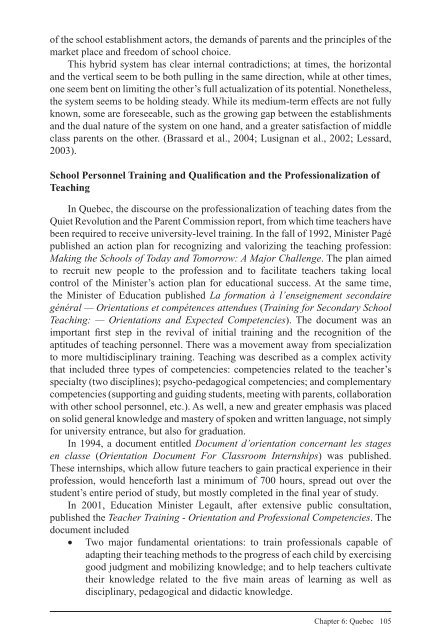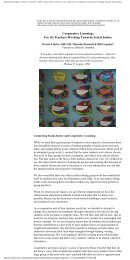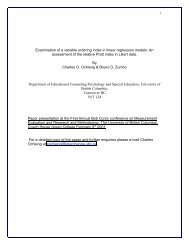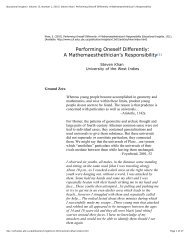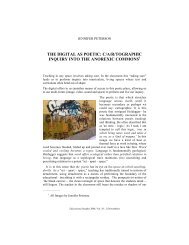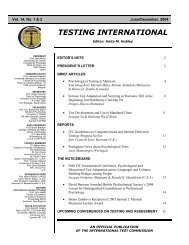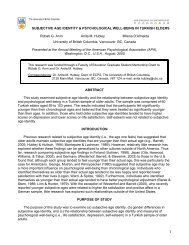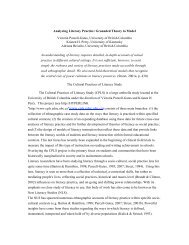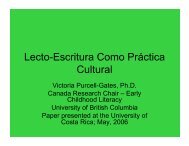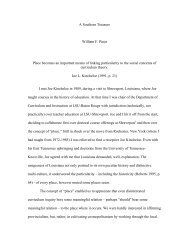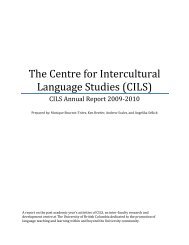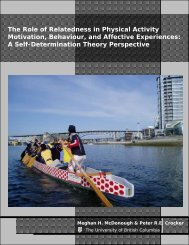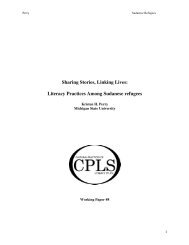The evolution of professionalism - Centre for Policy Studies in ...
The evolution of professionalism - Centre for Policy Studies in ...
The evolution of professionalism - Centre for Policy Studies in ...
Create successful ePaper yourself
Turn your PDF publications into a flip-book with our unique Google optimized e-Paper software.
<strong>of</strong> the school establishment actors, the demands <strong>of</strong> parents and the pr<strong>in</strong>ciples <strong>of</strong> the<br />
market place and freedom <strong>of</strong> school choice.<br />
This hybrid system has clear <strong>in</strong>ternal contradictions; at times, the horizontal<br />
and the vertical seem to be both pull<strong>in</strong>g <strong>in</strong> the same direction, while at other times,<br />
one seem bent on limit<strong>in</strong>g the other’s full actualization <strong>of</strong> its potential. Nonetheless,<br />
the system seems to be hold<strong>in</strong>g steady. While its medium-term effects are not fully<br />
known, some are <strong>for</strong>eseeable, such as the grow<strong>in</strong>g gap between the establishments<br />
and the dual nature <strong>of</strong> the system on one hand, and a greater satisfaction <strong>of</strong> middle<br />
class parents on the other. (Brassard et al., 2004; Lusignan et al., 2002; Lessard,<br />
2003).<br />
School Personnel Tra<strong>in</strong><strong>in</strong>g and Qualifi cation and the Pr<strong>of</strong>essionalization <strong>of</strong><br />
Teach<strong>in</strong>g<br />
In Quebec, the discourse on the pr<strong>of</strong>essionalization <strong>of</strong> teach<strong>in</strong>g dates from the<br />
Quiet R<strong>evolution</strong> and the Parent Commission report, from which time teachers have<br />
been required to receive university-level tra<strong>in</strong><strong>in</strong>g. In the fall <strong>of</strong> 1992, M<strong>in</strong>ister Pagé<br />
published an action plan <strong>for</strong> recogniz<strong>in</strong>g and valoriz<strong>in</strong>g the teach<strong>in</strong>g pr<strong>of</strong>ession:<br />
Mak<strong>in</strong>g the Schools <strong>of</strong> Today and Tomorrow: A Major Challenge. <strong>The</strong> plan aimed<br />
to recruit new people to the pr<strong>of</strong>ession and to facilitate teachers tak<strong>in</strong>g local<br />
control <strong>of</strong> the M<strong>in</strong>ister’s action plan <strong>for</strong> educational success. At the same time,<br />
the M<strong>in</strong>ister <strong>of</strong> Education published La <strong>for</strong>mation à l’enseignement secondaire<br />
général — Orientations et compétences attendues (Tra<strong>in</strong><strong>in</strong>g <strong>for</strong> Secondary School<br />
Teach<strong>in</strong>g: — Orientations and Expected Competencies). <strong>The</strong> document was an<br />
important fi rst step <strong>in</strong> the revival <strong>of</strong> <strong>in</strong>itial tra<strong>in</strong><strong>in</strong>g and the recognition <strong>of</strong> the<br />
aptitudes <strong>of</strong> teach<strong>in</strong>g personnel. <strong>The</strong>re was a movement away from specialization<br />
to more multidiscipl<strong>in</strong>ary tra<strong>in</strong><strong>in</strong>g. Teach<strong>in</strong>g was described as a complex activity<br />
that <strong>in</strong>cluded three types <strong>of</strong> competencies: competencies related to the teacher’s<br />
specialty (two discipl<strong>in</strong>es); psycho-pedagogical competencies; and complementary<br />
competencies (support<strong>in</strong>g and guid<strong>in</strong>g students, meet<strong>in</strong>g with parents, collaboration<br />
with other school personnel, etc.). As well, a new and greater emphasis was placed<br />
on solid general knowledge and mastery <strong>of</strong> spoken and written language, not simply<br />
<strong>for</strong> university entrance, but also <strong>for</strong> graduation.<br />
In 1994, a document entitled Document d’orientation concernant les stages<br />
en classe (Orientation Document For Classroom Internships) was published.<br />
<strong>The</strong>se <strong>in</strong>ternships, which allow future teachers to ga<strong>in</strong> practical experience <strong>in</strong> their<br />
pr<strong>of</strong>ession, would hence<strong>for</strong>th last a m<strong>in</strong>imum <strong>of</strong> 700 hours, spread out over the<br />
student’s entire period <strong>of</strong> study, but mostly completed <strong>in</strong> the fi nal year <strong>of</strong> study.<br />
In 2001, Education M<strong>in</strong>ister Legault, after extensive public consultation,<br />
published the Teacher Tra<strong>in</strong><strong>in</strong>g - Orientation and Pr<strong>of</strong>essional Competencies. <strong>The</strong><br />
document <strong>in</strong>cluded<br />
• Two major fundamental orientations: to tra<strong>in</strong> pr<strong>of</strong>essionals capable <strong>of</strong><br />
adapt<strong>in</strong>g their teach<strong>in</strong>g methods to the progress <strong>of</strong> each child by exercis<strong>in</strong>g<br />
good judgment and mobiliz<strong>in</strong>g knowledge; and to help teachers cultivate<br />
their knowledge related to the fi ve ma<strong>in</strong> areas <strong>of</strong> learn<strong>in</strong>g as well as<br />
discipl<strong>in</strong>ary, pedagogical and didactic knowledge.<br />
Chapter 6: Quebec 105


